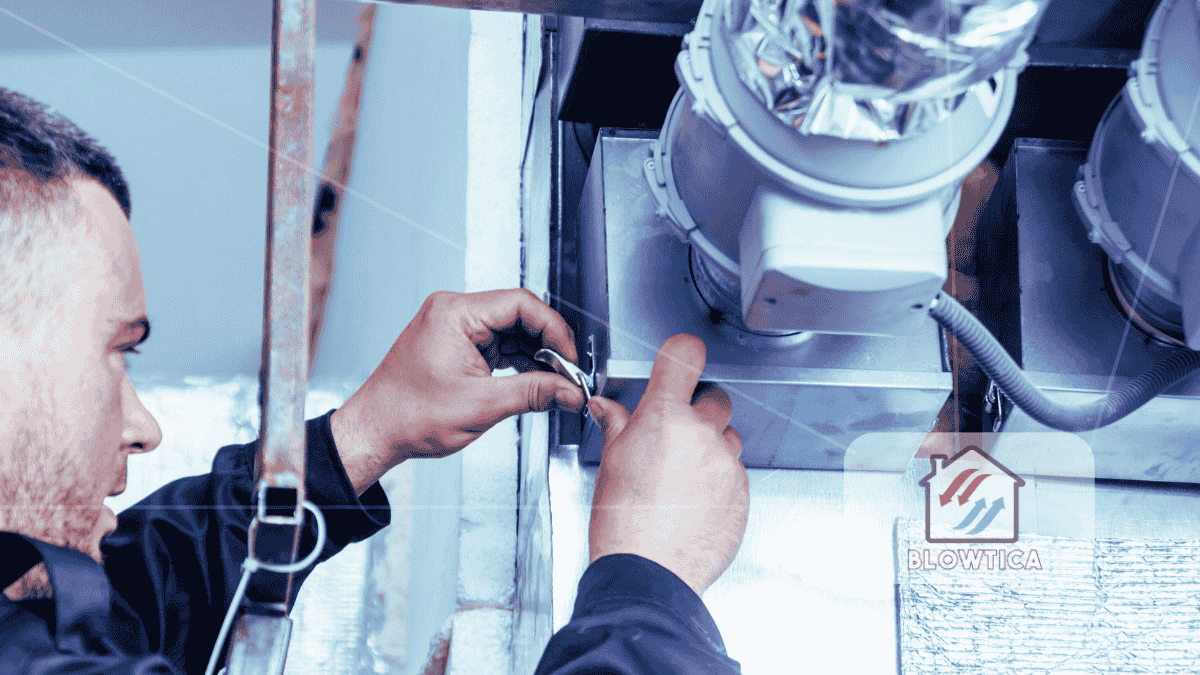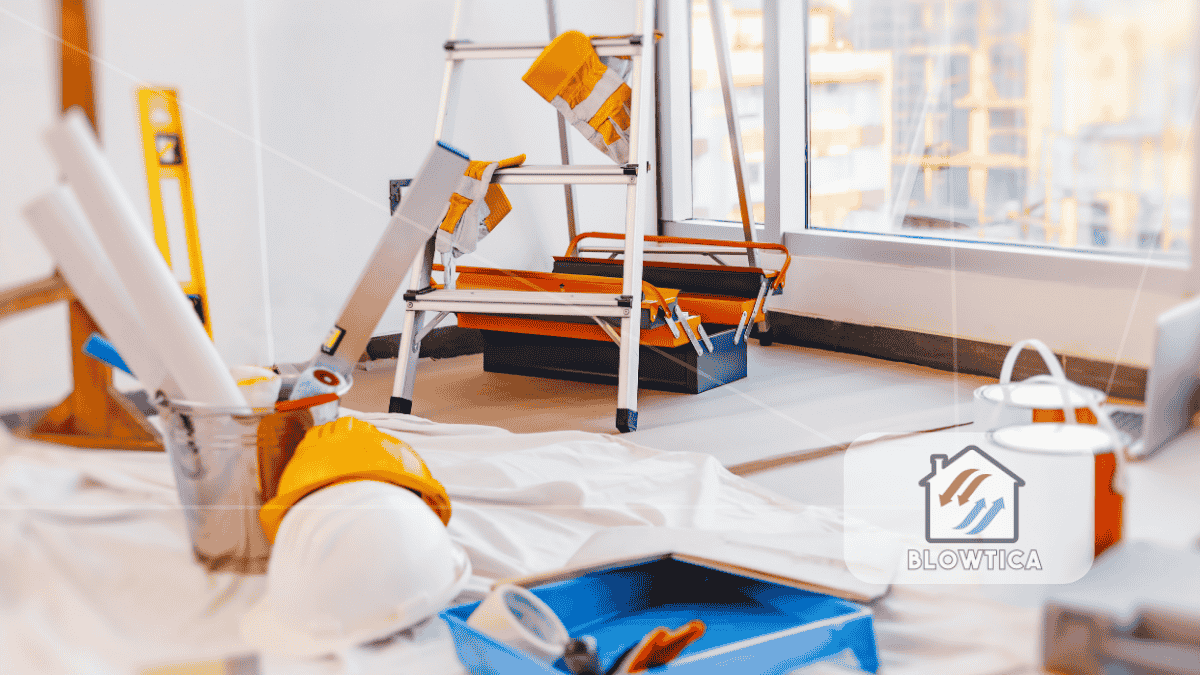
Most people don’t think about the air in their homes until something smells off, feels damp, or causes allergies to flare up. But the truth is, that indoor air quality can make or break your well-being. You might clean your counters, wash your floors, and change your sheets, but if you’re not moving air in and out of your space efficiently, your home might be making you sick. That’s where proper ventilation tips come in simple, practical changes that can dramatically improve how you breathe and feel indoors.
Proper ventilation tips aren’t just for renovation guides or contractor checklists. They’re essential knowledge for anyone who wants to breathe cleaner, safer air every day. This guide breaks down what you need to know without fluff or jargon so you can take control of your indoor air, protect your health, and make smarter choices for your home.
Why Ventilation Should Be on Your Radar
Air Pollution Isn’t Just an Outdoor Problem
It’s easy to assume that indoor air is cleaner than what you’re breathing outside, especially if you live away from traffic or industrial zones. However indoor air can be two to five times more polluted than outdoor air.
Pollutants build up in closed spaces: cleaning chemicals, paint fumes, pet dander, mold spores, dust mites, and even carbon dioxide. Without airflow, all of it lingers and you inhale it daily.
Long-Term Health Effects
Lack of proper ventilation doesn’t just cause temporary discomfort. It’s linked to real, lasting health problems:
- Chronic sinus congestion and coughing
- Worsened asthma and allergies
- Eye, nose, and throat irritation
- Brain fog, poor sleep, and fatigue
- Higher risk of respiratory infections
Good airflow helps flush out contaminants, regulate temperature, and reduce moisture the three major culprits behind poor indoor air.
1. Know Your Home’s Ventilation Baseline
Before jumping into upgrades, assess what you’re working with. Walk through your home with a critical eye.
Ask yourself:
- Are certain rooms more humid or musty than others?
- Do odors linger longer than they should?
- Are the windows fogging up regularly?
- Does the air feel stale or heavy?
Understanding where the air gets trapped is step one. You can’t fix what you can’t see.
2. Break Down the Basics: Natural vs. Mechanical Ventilation
Most homes rely on a mix of two types of ventilation:
Natural Ventilation
This involves letting outdoor air in through windows, doors, vents, or small openings. It’s cost-free and energy-efficient but depends heavily on outdoor conditions like wind, humidity, or air pollution levels.
Mechanical Ventilation
Fans, air ducts, and HVAC systems all fall under this category. Mechanical systems push stale air out and pull fresh air in, giving you more control. This is especially critical in modern, airtight homes where passive airflow is limited.
Pro tip: If your home was built after 2000, it likely requires mechanical ventilation to meet building codes for energy efficiency.
3. Start With These Ventilation Hotspots
Focus first on rooms that generate the most heat, moisture, and pollutants.
Kitchen
Cooking can release grease, smoke, carbon monoxide, and excess moisture. Always:
- Use a vent hood that exhausts to the outside.
- Clean filters and fan blades monthly.
- Open windows while cooking, especially when frying or boiling.
If your stove hood just recirculates air through a carbon filter, consider upgrading. It may reduce smells, but it doesn’t remove particles or gases.
Bathroom
One shower can raise indoor humidity dramatically. Use a ceiling fan every time, and let it run for 20–30 minutes afterward.
Make sure:
- The fan vents outside not into the attic or ceiling void.
- You wipe down wet surfaces after use.
- You leave the door slightly ajar to promote air movement.
Basement
Basements are naturally cooler and more humid perfect conditions for mold. Use a dehumidifier with a built-in humidity sensor, and if possible, install a small window fan or mechanical ventilator to circulate air.
Laundry Room
Dryers pump out moist, warm air. Vent them directly outside and check the lint trap and vent hose regularly to avoid fire hazards and airflow restrictions.
4. Embrace Strategic Window Use
Opening a window isn’t just about letting in a breeze. You need a plan.
Try this:
- Create a cross-breeze: open windows on opposite sides of the home to let air travel through.
- Open windows during low humidity hours, usually early morning or late evening.
- Avoid opening windows during pollen-heavy days or high outdoor pollution alerts.
Letting fresh air in for 10–15 minutes a day can significantly improve air quality, especially in bedrooms.
5. Don’t Just Use Fans Use Them Right
Most homes have fans, but few people use them effectively.
Exhaust Fans
- Clean and test fans in bathrooms and kitchens every season.
- Replace noisy or weak fans they’re probably not moving enough air.
- Upgrade to models with humidity sensors if you forget to turn them on.
Ceiling Fans
They don’t ventilate, but they move air, which helps distribute conditioned air and prevent stagnant zones. In summer, blades should spin counter-clockwise; in winter, reverse them.
6. Install a Whole-Home Ventilation System (If You Can)
A whole-house system might sound like a luxury, but in airtight, insulated homes, it’s almost essential.
Options include:
- HRVs (Heat Recovery Ventilators): Exchange indoor and outdoor air while retaining heat. Great for cold climates.
- ERVs (Energy Recovery Ventilators): Do the same, but also balance humidity. Ideal for humid climates.
Though these systems come with upfront costs, they’re one of the most effective long-term proper ventilation tips for modern homes.
7. Control Humidity Like a Pro
Moisture is ventilation’s silent enemy. Too much humidity invites mold, dust mites, and bacteria. Too little, and you’ll suffer dry skin, irritated sinuses, and static shocks.
Keep humidity between 30–50%:
- Use a digital hygrometer to monitor it room by room.
- Run dehumidifiers in basements and bathrooms.
- In winter, use a humidifier if levels drop below 30%, but monitor closely.
Managing moisture is one of the smartest proper ventilation tips for preventing long-term damage and respiratory stress.
8. Don’t Ignore Your HVAC System
Your furnace and air conditioner are major players in airflow even if their main job is temperature control.
Improve their impact on air quality:
- Replace filters every 60–90 days, or monthly if you have pets or allergies.
- Upgrade to MERV 13 filters for better particle capture.
- Schedule annual servicing to check for leaks, airflow issues, and dirty ducts.
- Ensure vents are open and unblocked in every room.
If some rooms always feel stuffy, consider balancing your ductwork or using booster fans.
9. Purify Where Ventilation Falls Short
In spaces where ventilation is limited like bedrooms, nurseries, or home offices air purifiers can help.
Choose units with:
- True HEPA filters (not “HEPA-like”)
- Activated carbon for odor and gas removal
- A clean air delivery rate (CADR) matched to the room’s size
They’re not a substitute for airflow, but they’re a valuable backup layer.
10. Watch for Warning Signs
Even with good systems in place, your home may send up red flags when airflow isn’t cutting it:
- Condensation on windows
- Persistent musty smells
- Mold patches on ceilings or behind furniture
- Difficulty waking up refreshed
- Headaches, especially in the afternoons or evenings
These are all clues that your ventilation strategy needs work. Trust your senses.
11. Child-Proof and Elder-Proof Ventilation Habits
If your home includes young kids or aging parents, it’s even more important to get airflow right. Children breathe faster than adults and are more vulnerable to pollutants. Older adults often spend more time indoors and may have respiratory issues.
Build safe habits into your routines:
- Keep fans on low overnight in bedrooms
- Use window locks if opening them around children
- Clean filters and vents in nurseries and sleeping areas monthly
Proper ventilation tips that protect the most vulnerable members of your household go a long way toward long-term wellness.
12. Keep It Seasonal
Adjust your ventilation strategy by season:
Spring & Summer
- Ventilate in the early morning or late evening to avoid bringing in hot, humid air.
- Use dehumidifiers to control moisture from open windows.
- Increase fan usage to circulate air.
Fall & Winter
- Use exhaust fans more often since windows stay closed.
- Run your furnace fan on “circulate” mode to move air.
- Consider heat recovery systems to avoid heat loss while airing out rooms.
Final Takeaways
Creating a well-ventilated home doesn’t require gutting your walls or installing industrial systems. It’s about building habits, maintaining systems, and understanding your home’s airflow patterns.
Here’s what to keep in mind:
- Focus first on high-moisture areas like bathrooms and kitchens.
- Open windows with intention not just randomly.
- Maintain HVAC systems and replace filters regularly.
- Control humidity aggressively.
- Supplement with purifiers in tight spaces.
The air inside your home should support your health, not work against it. Start applying these proper ventilation tips today, and you’ll not only breathe easier you’ll feel the difference in every room.









